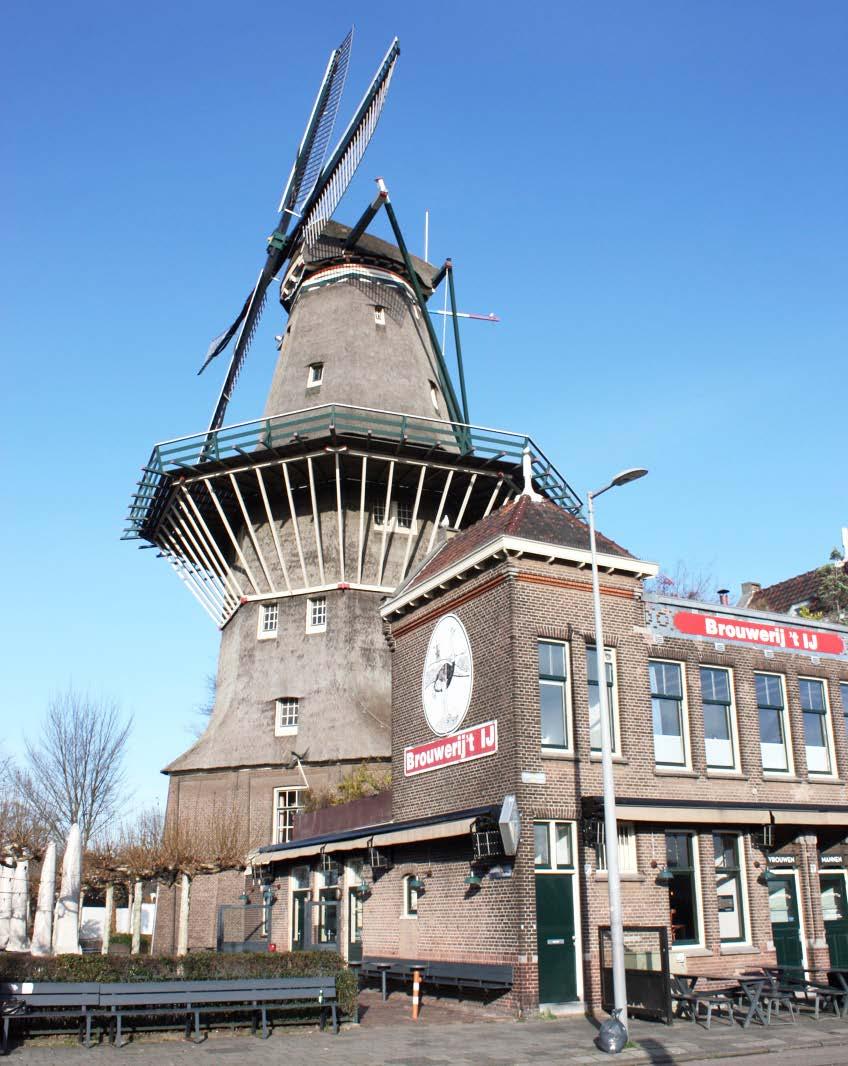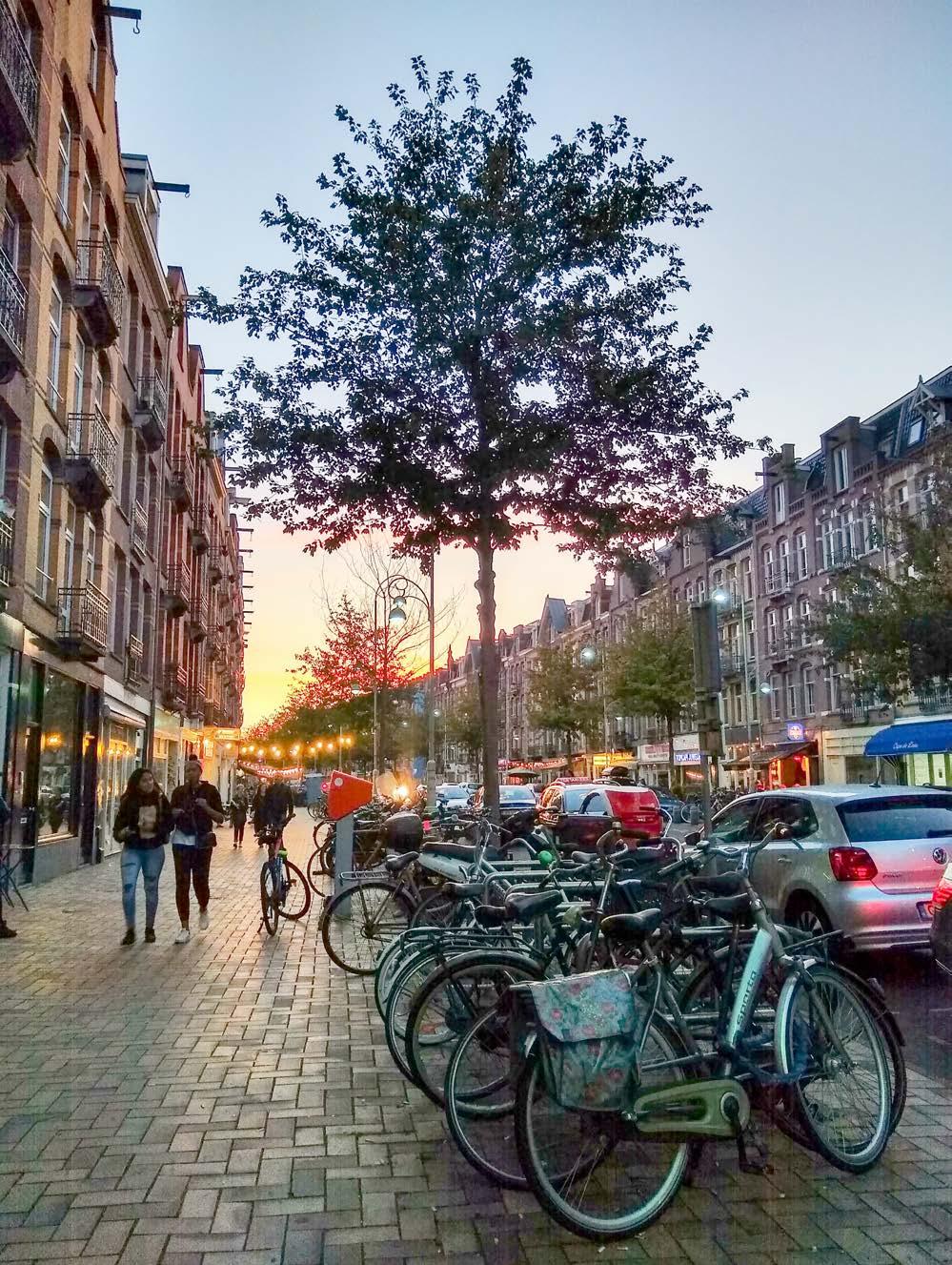
3 minute read
Neighbourhood Culture: Amsterdam Oost By Christina Newberry
By Christina Newberry
Amsterdam’s hip eastern borough is a cultural mosaic where Surinamese take-out joints mingle with Middle Eastern greengrocers, modern boutiques and classic Dutch bars.
SETTLE IN FOR A SIP

BROUWERIJ ‘T IJ, AMSTERDAM’S OLDEST BREWERY ©CHRISTINA NEWBERRY
Oost’s best-known drinking establishment is Brouwerij ‘t IJ, the city’s oldest craft brewery. Housed in a former municipal bathhouse, it’s tucked between Amsterdam’s largest windmill and the Singel canal. The brewery’s sunny picnic tables are tough to beat in summer, but the idyllic pond-side terrace at Distillery ‘t Nieuwe Diep gives them a run for their money. Nestled in leafy Flevopark, the distillery is accessible only on foot – or, if you’re modelling the locals, by bike. This is a perfect spot to try jenever, the local juniper-based spirit. To immerse yourself in neighbourhood life, head to Walter’s (also known as the Walter Woodbury Bar) for one of the local favourites: gin and tonic or fresh mint tea.
UNDERSTAND A TROUBLED PAST

TROPENMUSEUM ©CHRISTINA NEWBERRY
It’s impossible to talk about Oost’s cultural mosaic without acknowledging a history of slavery that brought so many cultures together in Amsterdam in the first place. The Tropenmuseum’s permanent exhibition “Afterlives of Slavery” showcases personal stories and artifacts that raise difficult questions about how a society moves on from a slave trade that ended only 150 years ago. In nearby Oosterpark, the abolition of slavery is celebrated every summer at the free Keto Koti (Broken Chains) Festival featuring Surinamese food, music, dance, and educational programming. If you’re not in town for the festival, visit the park’s national slavery monument, a moving work by Surinamese artist Erwin de Vries.
SHOP AND STROLL

JAVASTRAAT ©CHRISTINA NEWBERRY
Locals shop at the Dappermarkt, a six-days-a-week street market where you’ll find everything from nuts and bolts to souvenir T-shirts. Eat your way through the food stalls to sample kibbeling (deep-fried battered fish chunks), broodje haring (a herring sandwich with chopped onion), and a cone of Dutch Frites with satay sauce. Kids might prefer poffertjes (tiny sweet pancakes) sold by the jovial Ome Tom. For souvenirs, visit the monthly Pure Markt in Park Frankendael – then explore the park’s typically Dutch community gardens complete with charming cottages. If you’re looking for wooden clogs and don’t want to pay tourist prices, walk across the street to Intratuin, a huge garden superstore, where you’ll find a whole wall of them marketed to local gardeners. If boutiques are more your style, check out Czaar Peterstraat. This former shipping repair district is now lined with charming shops, where you can find clothes and jewellery made by local designers.
EAT YOUR WAY AROUND THE WORLD

OME TOMS ©CHRISTINA NEWBERRY
You’ll find just about every kind of cuisine on shopping street Javastraat, with Surinamese, Dutch, and Middle Eastern foods being most closely tied to the neighbourhood’s community. For Surinamese specials that change daily, head to Ricardo’s. If it’s Middle Eastern food you’re after, Nour restaurant has delicious kebabs. Supermarkt Tigris En Eufraat serves up excellent falafel wraps, or for a picnic, load up on containers of house-made hummus and baba ganoush. Dutch food is known for being heavy and deep-fried. For a modern take that showcases fresh local ingredients instead, try Wilde Zwijnen. The menu changes regularly based on what’s in season.
When to go

DAPPERMARKT BAND ©CHRISTINA NEWBERRY
August is the warmest month in Amsterdam, but April is the driest. Visit in summer for your best chance of good weather, but pack both your sunglasses and your umbrella.










